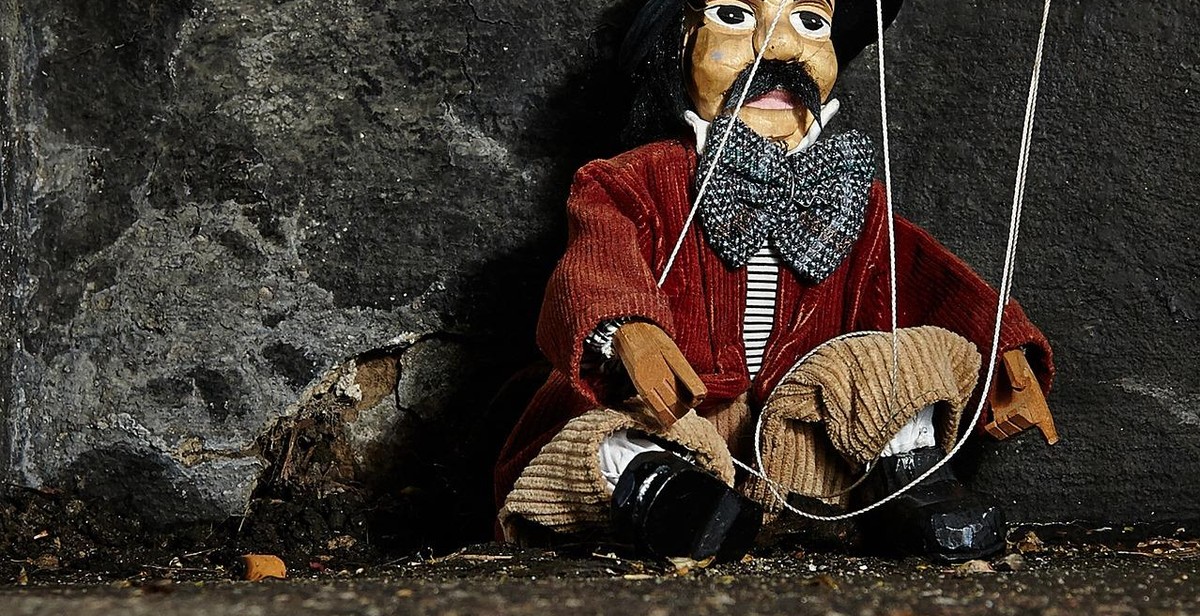How to Build a Marionette Puppet: Step-by-Step Guide to Crafting Your Own String Puppet
Marionette puppets have been captivating audiences for centuries. These intricate string puppets are known for their lifelike movements and ability to tell stories in a unique and engaging way. If you’ve ever wanted to try your hand at creating your own marionette puppet, you’ve come to the right place.
As a professional puppeteer with over a decade of experience, I’ve had the opportunity to create and perform with a wide variety of puppets, including marionettes. In this step-by-step guide, I’ll walk you through the process of crafting your own marionette puppet from start to finish.
What You’ll Need
Before we get started, let’s take a look at the materials and tools you’ll need:
- Wooden dowels
- Wire
- Pliers
- Scissors
- Drill
- Saw
- Paint and brushes
- Fabric
- Needle and thread
With these basic materials, you’ll be able to create a marionette puppet that is both beautiful and functional.
Step-by-Step Guide
Now that you have your materials, it’s time to get started on your marionette puppet. Follow these steps:
- Create the body
- Add the limbs
- Create the control bar
- Add the strings
- Paint and dress your puppet
With these steps completed, you’ll have a fully functional marionette puppet that you can use to tell stories and entertain audiences.
 |
 |
Materials Needed
Building a marionette puppet requires a few basic materials that can be easily found at your local craft store. Here are the materials you will need:
Wooden Dowels and Blocks
- 1/4 inch wooden dowels
- 1/2 inch wooden dowels
- 1 inch wooden blocks
These wooden dowels and blocks will be used to construct the frame of your puppet. You will need them to create the arms, legs, torso, and head of your marionette.
Puppet Head and Body
- Wooden ball for the head
- Wooden egg for the body
The wooden ball will be used to create the head of your puppet, while the wooden egg will be used to create the body. You can find these at your local craft store or online.
Wood Glue
You will need wood glue to hold the wooden dowels and blocks together. Make sure to use a strong, durable wood glue that will hold up over time.
Paint and Brushes
- Acrylic paint
- Paintbrushes
You will need paint and brushes to decorate your puppet. Choose colors that will make your puppet stand out and come to life.
String or Thread
You will need string or thread to attach to the various parts of your puppet. Make sure to choose a strong, durable string that will hold up over time.
| Materials | Quantity |
|---|---|
| 1/4 inch wooden dowels | 4 |
| 1/2 inch wooden dowels | 4 |
| 1 inch wooden blocks | 4 |
| Wooden ball for the head | 1 |
| Wooden egg for the body | 1 |
| Wood glue | 1 bottle |
| Acrylic paint | 1 set |
| Paintbrushes | 1 set |
| String or thread | 1 spool |
Step 1: Building the Frame
Building a marionette puppet requires patience, precision, and attention to detail. The first step in the process is to build the frame, which consists of cutting the dowels and assembling them into the basic shape of the puppet. Here’s how to do it:
Cutting the Dowels
The dowels are the wooden bars that form the skeleton of the puppet. You’ll need four long dowels for the legs and arms, two medium-length dowels for the torso, and one short dowel for the neck. Use a saw to cut the dowels to the desired length, making sure they are all the same size.
Tip: It’s a good idea to sand the ends of the dowels to make them smooth and prevent splinters.
Assembling the Frame
Once you have your dowels cut to size, it’s time to assemble the frame. Start by laying out the four long dowels in a cross shape, with the ends overlapping in the center. Use a small piece of wire to bind the ends together, making sure they are tightly secured.
Next, attach the two medium-length dowels to the center of the cross shape, one above and one below. These will form the torso of the puppet. Again, use wire to bind the dowels together at the point where they meet.
Finally, attach the short dowel to the top of the torso, perpendicular to the other dowels. This will form the neck of the puppet. Use wire to bind the neck dowel to the torso dowel.
Congratulations! You’ve just built the basic frame of your marionette puppet. In the next step, we’ll add the joints and strings that will bring your puppet to life.

Step 2: Creating the Body
Attaching the Head
Once you have completed the head of your marionette puppet, it’s time to attach it to the body. You will need a wooden dowel or stick that is long enough to reach from the top of the head to the bottom of the torso. You can use a drill or a hot glue gun to attach the dowel to the head. Make sure the dowel is centered in the head and securely attached.
Next, you will need to create a hole in the top of the torso for the dowel to fit into. Use a drill or a sharp knife to create a hole that is just slightly larger than the dowel. Insert the dowel into the hole and secure it with hot glue or wood glue. Make sure the dowel is centered and straight.
Adding the Limbs
Now it’s time to add the limbs to your marionette puppet. Cut four pieces of string or thread that are the same length as the dowel you used for the head. Tie one end of each string to the dowel at the appropriate location for each limb. For example, tie one string to the dowel where the left arm should be, and another string where the right arm should be.
Next, tie the other end of each string to the appropriate limb. For example, tie the left arm string to the left arm of the puppet. Make sure the strings are securely tied and that the limbs are positioned correctly.
Finally, attach the other end of each limb to a control bar or crossbar. The control bar should be long enough to allow you to manipulate the limbs from below the stage. You can attach the control bar to the limbs using hot glue or by tying the strings to the bar.
| Materials Needed: | Tools Needed: |
|---|---|
| Wooden dowel or stick | Drill or sharp knife |
| String or thread | Hot glue gun or wood glue |
| Control bar or crossbar |

Step 3: Painting and Decorating
After completing the construction of your marionette puppet, it’s time to give it some color and character. Painting and decorating your puppet can be a fun and creative process that will bring your puppet to life. Here are the steps to follow:
1. Priming the Frame
Before painting your puppet, it’s important to prime the frame to ensure that the paint adheres properly. Use a primer that is suitable for the material you used to build your puppet. Apply the primer evenly with a brush or spray and let it dry completely before painting.
2. Painting the Body and Head
Choose the colors you want to use for your puppet’s body and head. You can use acrylic or oil-based paints depending on your preference. Apply the paint in thin layers, allowing each layer to dry before applying the next. Use a small brush to paint the details and a larger brush for the larger areas.
3. Adding Details
Once you have painted the body and head of your puppet, it’s time to add the details. Use a small brush to add features such as eyes, eyebrows, lips, and cheeks. You can also use fabric, felt, or other materials to create clothing, hair, or accessories for your marionette.
- Be patient and take your time when painting and decorating your puppet.
- Experiment with different colors and textures to create a unique character.
- Protect your work surface with a drop cloth to avoid any spills or stains.
By following these steps, you can create a beautiful and unique marionette puppet that is ready to be brought to life with your puppeteering skills.

Step 4: Stringing the Puppet
Attaching strings to your marionette puppet is a crucial step in bringing it to life. Before you begin, make sure you have all the necessary materials, including thin string or fishing line and a needle with a large eye.
Attaching the Strings
Start by attaching the strings to the control bar. Tie a knot at one end of each string and thread it through the hole in the control bar. Tie a knot on the other side of the control bar to secure the string in place.
Next, attach the strings to the puppet itself. Begin with the head string, which should be tied to the top of the head. The arms and legs should each have two strings, one attached to the upper arm or thigh and one attached to the lower arm or leg.
Using your needle and thread, carefully sew the strings to the puppet in the appropriate places. Make sure the strings are tight enough to control the movement of the puppet, but not so tight that they restrict its movement.
Testing the Movement
Once all the strings are attached, it’s time to test the movement of your marionette puppet. Hold the control bar and gently move it up and down, left and right, to see how the puppet responds. Adjust the strings as needed to ensure smooth and natural movements.
Remember that it may take some practice to master the control of your marionette puppet. Be patient and keep experimenting with different movements and techniques until you achieve the desired results.
Congratulations! You have now completed the final step in building your own marionette puppet. With a bit of creativity and practice, you can use your puppet to tell stories, entertain audiences, and bring joy to people of all ages.
Conclusion
Building a marionette puppet is a rewarding and fulfilling experience. With patience, dedication, and creativity, anyone can craft their own unique string puppet. Remember to take your time during each step of the process, from designing the puppet to stringing it up for performance.
Tips for Success
- Choose high-quality materials to ensure your puppet lasts for years to come.
- Practice your puppetry skills regularly to improve your performance.
- Join a local puppetry group or attend workshops to learn from other puppeteers.
- Experiment with different designs and techniques to make your puppet stand out.
Final Thoughts
Building a marionette puppet may seem daunting at first, but with the right tools and instructions, it can be a fun and rewarding project. Whether you’re a seasoned puppeteer or a beginner, creating your own string puppet allows you to express your creativity and bring your imagination to life. So grab your materials and get started on your own unique marionette puppet today!
